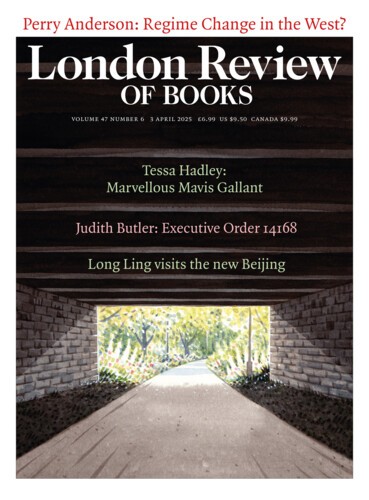Aquarter of the way through this century, regime change has become a canonical term. It signifies the overthrow, typically but not exclusively by the United States, of governments around the world disliked by the West, employing for that purpose military force, economic blockade, ideological erosion, or a combination of these. Yet originally the term meant something quite different, a widespread alteration in the West itself – not the sudden transformation of a nation-state by external violence, but the gradual installation of a new international order in peacetime. The pioneers of this conception were the American theorists who developed the idea of international regimes as arrangements assuring co-operative economic relations between the major industrial states, which might or might not take the form of treaties. These, it was held, developed out of US leadership after the Second World War, but superseded it with the formation of a consensual framework of mutually satisfactory transactions between leading countries. The manifesto of this idea came in Power and Interdependence, a work co-authored by two pillars of the foreign policy establishment of the time, Joseph Nye and Robert Keohane, whose first edition – it went through many – appeared in 1977. Though presented as a system of norms and expectations that helped assure continuity between different administrations in Washington by introducing ‘greater discipline’ into American foreign policy, Nye and Keohane’s study left no doubt about the pay-off for Washington. ‘Regimes usually are in America’s interest because the United States is the world’s foremost commercial and political power. If many regimes did not already exist, the United States would certainly want to invent them, as it did.’1 By the early 1980s, books along these lines were tumbling off the presses: a symposium entitled International Regimes, edited by Stephen Krasner (1983); Keohane’s own treatise, After Hegemony (1984); and a host of learned articles.
In the following decade this reassuring doctrine underwent a mutation, with the publication of a volume entitled Regime Changes: Macroeconomic Policy and Financial Regulation in Europe from the 1930s to the 1990s, edited by Douglas Forsyth and Ton Notermans – one American, the other Dutch. It retained but sharpened the idea of an international regime, specifying the variant that had prevailed before the war, resting on the gold standard; then the order forged at Bretton Woods, which succeeded it after the war; and finally spelling out the demise of this successor in the 1970s.2 What had replaced the world instituted at Bretton Woods was a set of system-wide constraints affecting all governments, no matter their complexion, consisting of macro-policy packages of monetary and financial regulation that fixed the parameters of possible labour market, industrial and social policies. Where the postwar order had been driven by the aim of assuring full employment, the priority of its sequel was monetary stability. Classical economic liberalism had come to an end with the Great Depression. Postwar Keynesianism had petered out with the stagflation of the 1970s. The new international regime marked the reign of neoliberalism.
Such was the original meaning of the formula ‘regime change’, today all but forgotten, erased by the wave of military interventionism that confiscated the term at the turn of the century. A glance at its Ngram tells the story. Flatlining since its arrival in the 1970s, the frequency of the term suddenly soared in the late 1990s, multiplying sixty times over and becoming, as John Gillingham, an economic historian attached to its earlier sense, remarked, ‘the current euphemism for overthrowing foreign governments’.
Yet the relevance of its original meaning remains. Neoliberalism has not gone away. Its hallmarks are now familiar: deregulation of financial and product markets; privatisation of services and industries; reduction of corporate and wealth taxation; attrition or emasculation of trade unions. The aim of the neoliberal transformation that began in the United States and Britain under the governments of Carter and Callaghan and reached full momentum under those of Thatcher and Reagan was to restore the rates of profit to capital – which had fallen virtually everywhere from the late 1960s onwards – and to conquer the combination of stagnation and inflation that had set in once these rates had dropped.
Send Letters To:
The Editor
London Review of Books,
28 Little Russell Street
London, WC1A 2HN
letters@lrb.co.uk
Please include name, address, and a telephone number.


